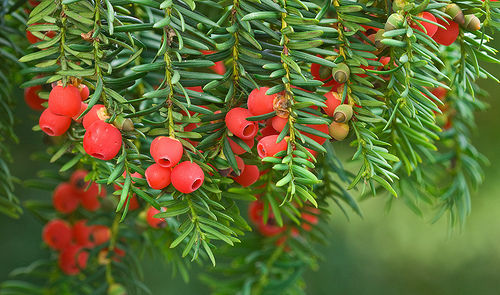Fungi as a Promising Ally in Cancer Therapy: Insights from Recent Research
- Marc Violo

- Feb 25
- 3 min read
Cancer remains one of the pressing challenges in modern medicine, with chemotherapy resistance and metastasis often standing in the way of effective treatment. However, nature may hold some of the answers we’ve been searching for. Recent research has uncovered the remarkable potential of fungi—not just as a source of bioactive compounds, but as a platform for producing life-saving anticancer drugs. Two groundbreaking studies, one exploring taxane-producing fungi and the other investigating mushroom-derived β-glucans, have shed light on how fungi could revolutionize cancer therapy.
Fungi as a Sustainable Source of Anticancer Drugs
The first study, led by Jocelyn Guadalupe Guevara-Sánchez from Instituto Tecnológico de Veracruz in Mexico, focused on isolating endophytic fungi from the bark of Taxus globosa, commonly known as the Mexican yew. This tree is renowned for producing paclitaxel, a potent anticancer drug used to treat breast, ovarian, and lung cancers. However, traditional methods of extracting paclitaxel from yew trees are slow, costly, and environmentally taxing. The researchers identified 21 endophytic fungal strains capable of producing taxadiene and baccatin III, key precursors of paclitaxel. Among these, fungi from the genera Aspergillus, Trichoderma, and Hypoxylon showed particularly promising results.

This discovery is a game-changer. By leveraging fungal fermentation, scientists could potentially produce paclitaxel and its precursors more efficiently and sustainably. This approach not only reduces reliance on slow-growing yew trees but also opens the door to scalable, cost-effective production of this critical drug. Fungi, with their rapid growth and adaptability, could become a cornerstone of sustainable drug manufacturing in the future.
Mushroom β-Glucans: Enhancing Chemotherapy Efficacy
While fungi offer a sustainable way to produce anticancer drugs, they also hold promise in enhancing the effectiveness of existing treatments. The second study, led by Nehal M. El-Deeb Genetic Engineering and Biotechnology Research Institute (GEBRI) in Egypt, explored the synergistic effects of combining β-glucans from Pleurotus ostreatus (oyster mushroom) with paclitaxel. β-glucans are natural polysaccharides known for their immunomodulatory and antitumor properties. The researchers hypothesized that these compounds could help overcome one of the most significant challenges in cancer therapy: chemotherapy resistance, often driven by cancer stem cells (CSCs).

Using 3D mammosphere models of breast cancer, the team tested 40 combinations of β-glucans and paclitaxel. They discovered that a specific combination—2.0 mg/mL of β-glucans with 3.0 µg/mL of paclitaxel—exhibited a synergistic effect, significantly reducing cancer cell viability and migration. This combination also induced apoptosis and disrupted mitochondrial function in CSCs, which are notoriously resistant to conventional treatments and often responsible for tumor recurrence.
What makes this finding particularly exciting is the dual action of β-glucans. Not only do they enhance the effects of chemotherapy, but they also stimulate the immune system, particularly natural killer cells, which play a crucial role in targeting and destroying cancer cells. This dual mechanism could make β-glucans a powerful adjunct to existing cancer therapies, offering a way to tackle both the tumor and its resistant stem cells.
A New Frontier in Cancer Therapy
The potential of fungi in cancer therapy extends beyond just producing drugs or enhancing chemotherapy. Both studies highlight the importance of targeting mitochondrial function in cancer cells. Mitochondria, often referred to as the powerhouses of the cell, play a critical role in cancer cell survival and proliferation. Fungal-derived compounds, such as β-glucans, can induce mitochondrial depolarization, leading to cancer cell death. This mechanism could pave the way for new therapies that specifically target the metabolic vulnerabilities of cancer cells, offering a more precise and effective approach to treatment.
While the potential of fungi in cancer therapy is immense, there are still hurdles to overcome. Optimizing fungal cultures for maximum production of bioactive compounds, ensuring the safety and efficacy of these treatments in clinical trials, and educating the public about the benefits of fungal-based therapies are all critical steps. However, the progress made so far is undeniably promising.
Fungi, often overlooked in the realm of medicine, are emerging as powerful allies in the fight against cancer. From producing life-saving drugs like paclitaxel to enhancing the efficacy of chemotherapy through β-glucans, fungi offer a wealth of opportunities for innovative cancer treatments. As research progresses, these natural organisms could play a pivotal role in transforming cancer therapy, offering hope to patients worldwide.




